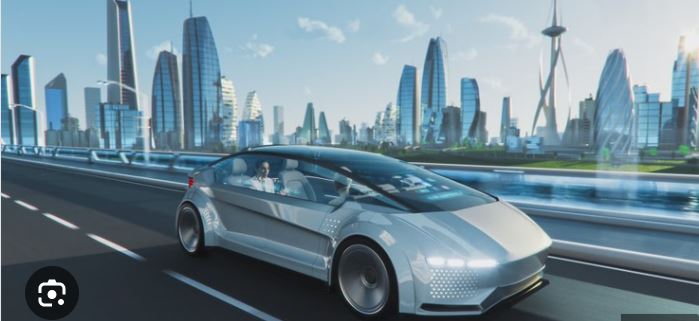
2024 Self Driven Car 2024
In the ever-evolving landscape of autonomous vehicles, the quest for safety and reliability remains paramount. The automotive industry has witnessed remarkable strides in recent years, with self-driving cars becoming increasingly integrated into our daily lives. Central to this progress are innovations like “Glance” technology, a breakthrough in the field of autonomous vehicles.
These cutting-edge systems, developed in collaboration with annotation companies, have revolutionized the way self-driving cars perceive and respond to their surroundings, particularly when it comes to identifying driver discomfort. In this article, we delve into the fascinating world of next-generation self-driving autos, exploring how “Glance” innovation, in partnership with annotation companies, is shaping a safer and more secure future on the roads.
The Power of “Glance” Technology
At the core of the self-driving car safety transformation is the groundbreaking “Glance” technology, developed through collaboration with top annotation companies. This innovative system harnesses the capabilities of artificial intelligence and computer vision to provide autonomous vehicles with a profound understanding of human behavior and EDT Driving Lessons.
“Glance” technology acts as a vigilant sentinel, with a particular focus on the driver and occupants. It keenly observes subtle indicators like facial expressions, body posture, and even eye movements to detect signs of discomfort, stress, or distraction. This heightened sensitivity enables rapid, context-aware responses, enhancing overall safety.
The adaptability of “Glance” technology is noteworthy. When it detects driver discomfort, it can trigger various responses, such as adjusting driving behavior or engaging the human driver to resume control if necessary, ensuring safety takes precedence.
This proactive approach, coupled with audio annotation in certain scenarios, not only reacts to emergencies but also prevents them. By recognizing and mitigating driver discomfort, “Glance” technology substantially reduces accident risks, making self-driving cars safer for everyone on the road.
Real-World Applications and Success Stories
As “Glance” technology gains traction, its real-world applications underscore its effectiveness. In various trials and deployments, self-driving cars equipped with this innovation have demonstrated remarkable results. For instance, during test drives in urban environments, “Glance” technology successfully identified instances where drivers were uneasy or distracted, allowing the vehicle to adapt its behavior accordingly. This adaptability minimizes the chances of accidents and enhances overall road safety.
One notable success story comes from a pilot program in a bustling city, where self-driving taxis equipped with “Glance” technology significantly reduced accidents and near-miss incidents. Passengers reported feeling safer during their rides, knowing that the car’s AI was attentive to their well-being. This newfound confidence in autonomous vehicles has the potential to accelerate their adoption and integration into everyday transportation systems.
Industry Impact and Future Outlook
The integration of “Glance” technology into self-driving cars has far-reaching implications for the automotive industry. Safety has always been a paramount concern in autonomous vehicle development, and “Glance” technology represents a giant leap forward in addressing this concern. As the technology evolves and becomes more widespread, it is likely to influence safety regulations and standards.
Moreover, automakers and technology companies are recognizing the importance of collaborating with annotation companies and AI experts to refine and perfect “Glance” technology. This cooperative effort is expected to accelerate its development and ensure its robustness in a variety of driving conditions.
Looking ahead, the future of “Glance” technology is promising. Ongoing research aims to make it even more perceptive, capable of detecting even subtler signs of discomfort or distraction. Additionally, improvements in human-machine interfaces may allow for more seamless transitions between autonomous and manual driving modes.
Challenges and Concerns
While “Glance” technology holds immense promise, it is not without challenges and concerns. One concern is the potential for false positives, where the system may interpret normal behavior as discomfort. Careful calibration and fine-tuning of the technology are essential to mitigate such issues.
Privacy is another significant concern. The technology relies on cameras and sensors to monitor the driver, raising questions about data collection and the potential for misuse. Addressing these privacy concerns and implementing robust data protection measures will be vital to gain public trust.
Conclusion
In conclusion, “Glance” technology, developed in collaboration with annotation companies, represents a pivotal advancement in the quest for safer self-driving cars. By discerning and responding to driver discomfort, it enhances overall safety on the road. Real-world applications and success stories highlight its potential to reduce accidents and instill confidence in autonomous vehicles.
The industry impact of “Glance” technology is substantial, with the potential to influence safety regulations and standards. Collaboration between automakers, technology firms, and AI experts is vital for its continued improvement.
However, challenges such as false positives and privacy concerns must be carefully addressed to ensure the responsible and ethical deployment of this technology. As research and development continue, we can expect “Glance” technology to become even more perceptive and capable, contributing to a future where self-driving cars are not only convenient but also exceptionally safe for passengers and pedestrians alike.
Write and Win: Participate in Creative writing Contest & International Essay Contest and win fabulous prizes.


